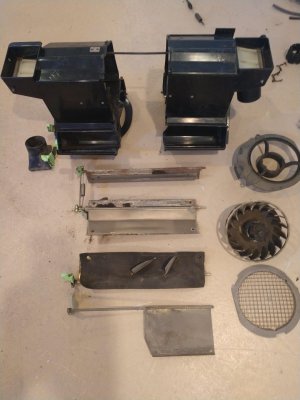Thanks for all the help.
Removal was quite easy but the "squirrel cage" fan assembly seems pretty tight. I lubricated it as best I could but it is still not exactly free spinning. Before I proceed further with more disassembly, I'm curious as to whether or not I should be expecting the blower fan to spin freely or if some "tightness" is normal.
Thoughts and additional feedback is welcome.
After my rebuild, the cage spins quite freely, the only hesitation I feel is coming from the magnets, the carbon brushes and a little loss from the bearings. If given a good spin, the cage will keep spinning for at least 3-4 seconds.
The motor itself also has bearings, which could go bad. After all they are in the 'open air', and can accumulate all kinds of dust. However i think they can only be replaced by opening the steel, press fitted motor assembly, and I'm not sure if it could be reassembled again. (requires bending metal tabs twice)
Here the carbon brushes, at the bottom of the pic near the red part:
You could test easily: Release the carbon brushes and spin the cage; if you still feel hesitations beyond your expectation, then it may be needed to replace the bearings.
Or search for a new motor; Bosch used to sell them back in 2021 (~85 euro, part number is Bosch 0130007002 (info Sept 2021)
you can also tap out the motor from the white cage. In my car it was very tight press fit, and required a surprisingly big whack with a hammer.
This will allow you to clean it all, but more importantly; this is necessary IF you decide to replace the motor.







